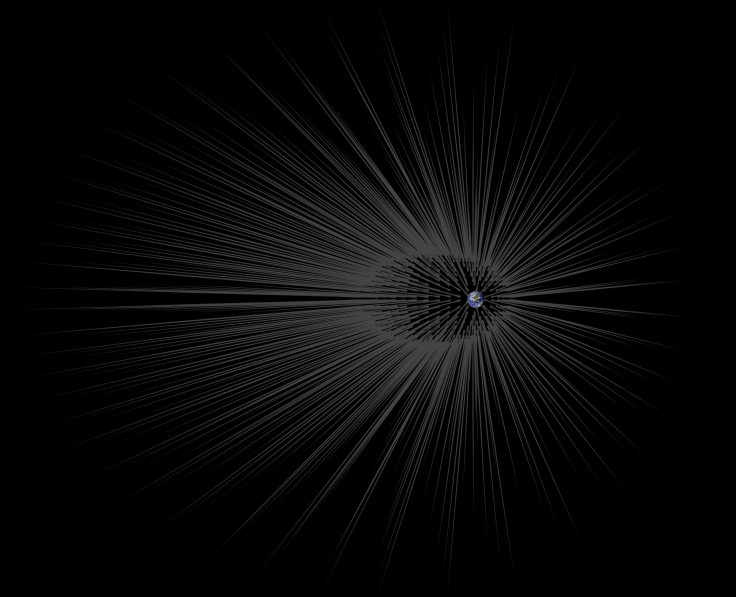Earth's Hairy Dark Matter Could Help Unravel A Cosmic Mystery

Our own Earth could hold the root that's key to finally detecting dark matter. A new study simulates streams of dark matter rooted in the planet's core that would create filaments, or "hair," of dark matter around the planet. Finding the dark matter "root" -- with its dense concentration of the mysterious substance -- could lead to new insights about this material that has eluded researchers.
The amount of dark matter in the universe is believed to dwarf the normal matter in the cosmos. Dark matter makes up around 27 percent of the universe while normal matter makes up just 5 percent, according to current theories of physics, with dark energy accounting for the rest. Researchers have been able to indirectly observe dark matter from its gravitational effects on normal matter or galaxies. Based on the data, researchers categorize dark matter as something that doesn't move around or interact with light, making it invisible.
"Dark matter has eluded all attempts at direct detection for over 30 years. The roots of dark matter hairs would be an attractive place to look, given how dense they are thought to be," Charles Lawrence, chief scientist for the Jet Propulsion Laboratory’s astronomy, physics and technology directorate, said in a statement.
Based on simulations, researchers determined that dark matter orbits around galaxies like the Milky Way in particle streams, according to NASA. If the stream meets a planet, the dark matter forms a dense filament extending outward like hair. As in human hair follicles, the root is much denser than the tip. If they can find a way to identify the root, researchers hope to gain new insights into the mysterious substance.
In addition to gaining new insights on dark matter, researchers could use "kinks" caused by the different layers of the planet to map the layers of other planets, according to NASA. The research will be published in Astrophysical Journal this week.
Earth, of course, would not be the only cosmic object to have "hair." But some may not. Astronomer John Wheeler, explaining the lack of distinctive features of a black hole based on observations from outside the event horizon, the "point of no return," said black holes have no hair. A recent study, however, argues that black holes may have more traits than just mass, rotation and charge, thus being hairy after all.
© Copyright IBTimes 2025. All rights reserved.





















